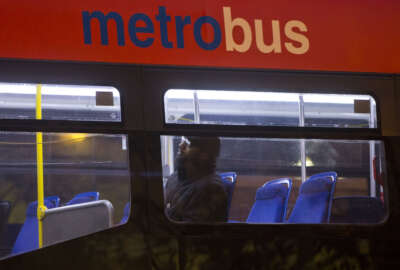
The great GSA employee conundrum: Where do I sit?
Sardine-eating and phone conferring spoil the idea of collaboration and brotherly love in open plan offices.
We now know for sure. Harvard University said so. Open-plan offices are counter productive. Research shows people in pen-like settings are less productive than those in cubicles or offices.
News outlets, like Inc. Magazine, can’t get enough of it. I suspect that’s because so many of them impose open plan offices for their scribblers. Historically, newsrooms were open plan before they were called that vogue word. They were just newsrooms. Reporters created their own privacy with tall stacks of papers.
Federal agencies, at least some of them, have gone whole hog for the open pen. They’re inspired, I guess, by uber-successful companies like Google and Facebook. Images of those companies’ workspaces give me the hives, personally. Big bullpens with high ceilings, bare concrete finishes, work surfaces that accommodate only a monitor, keyboard and mouse. All that public coffee drinking, cellphone conferring, Axe-sniffing, email alerting, tooth flossing and sardine-eating. Even contemporary stock photography of “work” depicts people collaborating, yet everyone pecking at their notebook computer.
This all came to mind when learning that the General Services Administration plans to move 1,000 of its Region 11 people from its current National Capital Region building to GSA headquarters 14 blocks away. GSA’s 18th and F domicile is sort of a The Fly-like affair — half traditional design, half transformed. That’s because a renovation project during the Obama administration was cut off by Congress. Still, the result was a place that could accommodate only half the people who worked there. You were supposed to telework unless you had good reason to drop in on the “hotel.”
Hotelling never seemed appealing to me either. And not just because another noun was turned into a verb. What’s worse than someone else’s mouse or keyboard? I sometimes wonder if open plan and “hotelling” were secretly developed by the people who sell Clorox Disinfecting Wipes. Even those don’t get the crumbs out from under the Ctrl-Alt-Del keys.
Then again, these ideas could have been the secret work of cubicle manufacturers. Cubicles depress and dehumanize, until you see open plan.
With the Trump administration putting the kibosh on teleworking, where are they all going to sit? Will GSA have to buy thousands of new PCs? Administrator Emily Murphy, while giving a rosy picture of the new coziness, was mum on those details.
The Harvard study finds that people actually talk and collaborate less when working in the open than when they’re in more delineated spaces. Instead, they communicate with email or texting. Besides, collaborating is more a matter of choice when dealing with people you like, not a function of removing privacy and little amenities. Plus the general noise of open spaces degrades peoples’ ability to think. Some people opt out by bringing noise-canceling headphones to work.
Open plan is not new. It worked well when people precisely did not collaborate, but instead were all doing the same thing in parallel. The great National Building Museum was once the Civil War Pension building, where hundreds of paper-pushing clerks processed claims all day long at rows and columns of desks. The historic Johnson Wax Building features a giant open floor designed before individuals each even had telephones. I guess they sat there and sold Johnson Wax.
Hot box sales, typing pools, shirtwaist sewing, accounting entry, capacitor soldering — those are the kind of individual-but-done-en-mass activities that first gave rise to open plans and perhaps still make sense. But for everyone else, it’s time to rethink this fad. And bring back teleworking.
Copyright © 2025 Federal News Network. All rights reserved. This website is not intended for users located within the European Economic Area.
Tom Temin is host of the Federal Drive and has been providing insight on federal technology and management issues for more than 30 years.
Follow @tteminWFED
Related Stories






